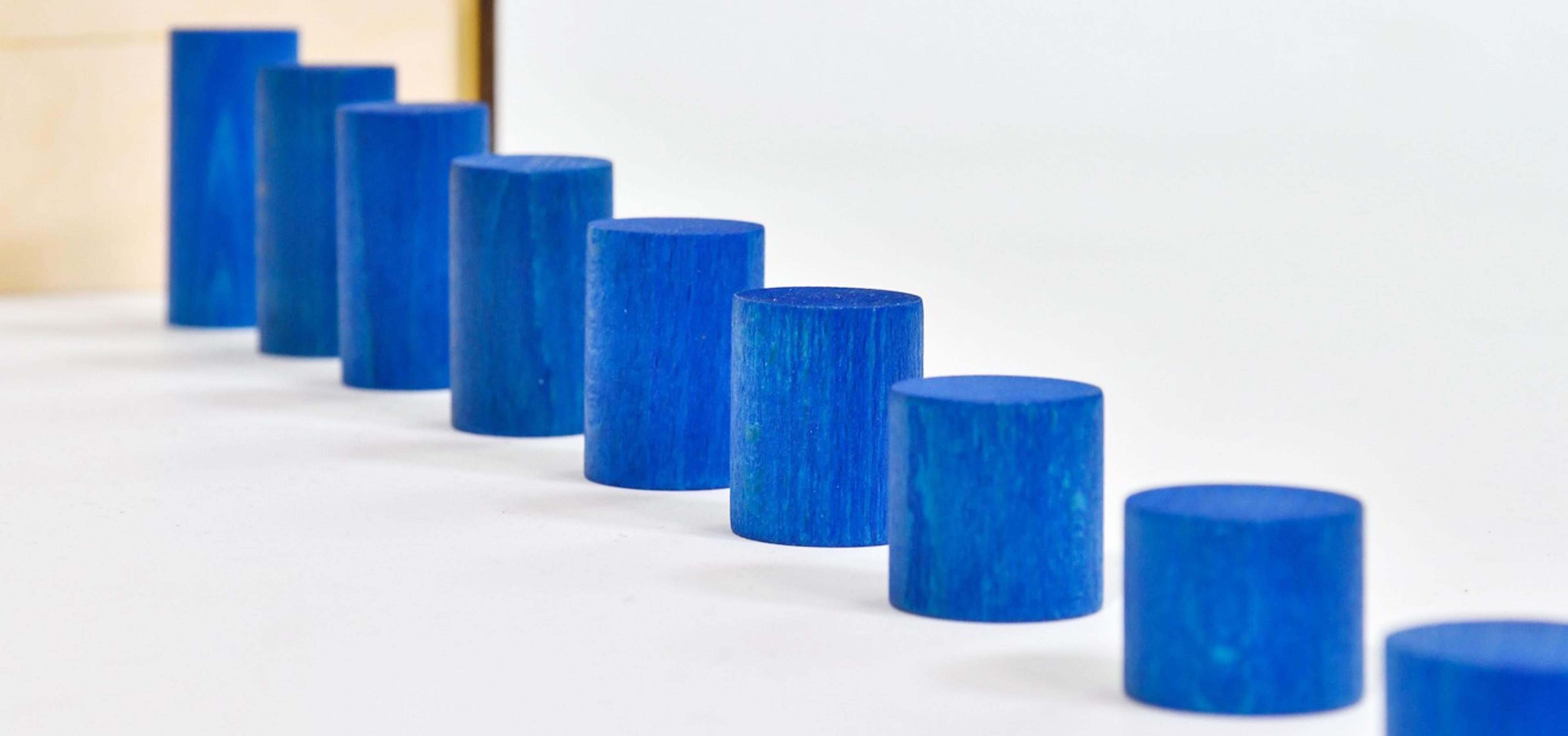Montessori education emphasises the importance of sensorial learning for young children. Sensorial materials are designed to provide children with a hands-on, sensory experience that promotes exploration and learning. One of the key sensorial materials in Montessori education is the knobless cylinders.
Overview of Knobless Cylinders:
Knobless cylinders are wooden cylinders of varying sizes and colours. Unlike knobbed cylinders, which have a knob on top of each cylinder, knobless cylinders have no knobs. They are designed to help children develop their visual and tactile senses, as well as their ability to discriminate size, shape, and dimension.
Description of the four different sets of knobless cylinders
The knobless cylinders come in four different sets as follows. Each set contains a different number of cylinders, and the cylinders are arranged in a specific sequence.
Broad stair: The broad stair contains ten cylinders, with each cylinder varying in width but having the same height and depth.
Narrow stair: The narrow stair contains ten cylinders that vary in height and width but have the same depth.
Spindle box: The spindle box contains nine cylinders that vary in height and diameter. Knobless Cylinders: The knobless cylinders themselves come in ten different sizes that vary in height, diameter, and colour.
Using the knobless cylinders, children learn to discriminate between different sizes and dimensions by matching and stacking the cylinders. The broad stair and narrow stair sets help children develop their understanding of width and height, while the spindle box set helps children understand differences in diameter. The knobless cylinders help children develop their understanding of all three dimensions - height, width, and diameter.

Benefits of using knobless cylinders:
- children can develop their ability to classify and order objects according to size, shape, and dimension.
- develop their visual and tactile senses by manipulating and exploring the cylinders. These skills are crucial for the development of mathematical and scientific thinking.
Using knobless cylinders in Montessori:
Knobless cylinders can be used in various ways in a Montessori classroom. The teacher can demonstrate how to use the cylinders, and then the child can be given the opportunity to explore and play with them on their own. The teacher can also introduce activities that involve matching and sorting the cylinders according to size, shape, and dimension.
In conclusion, using knobless cylinders, children develop their ability to discriminate size, shape, and dimension, which is crucial for the development of mathematical and scientific thinking.

